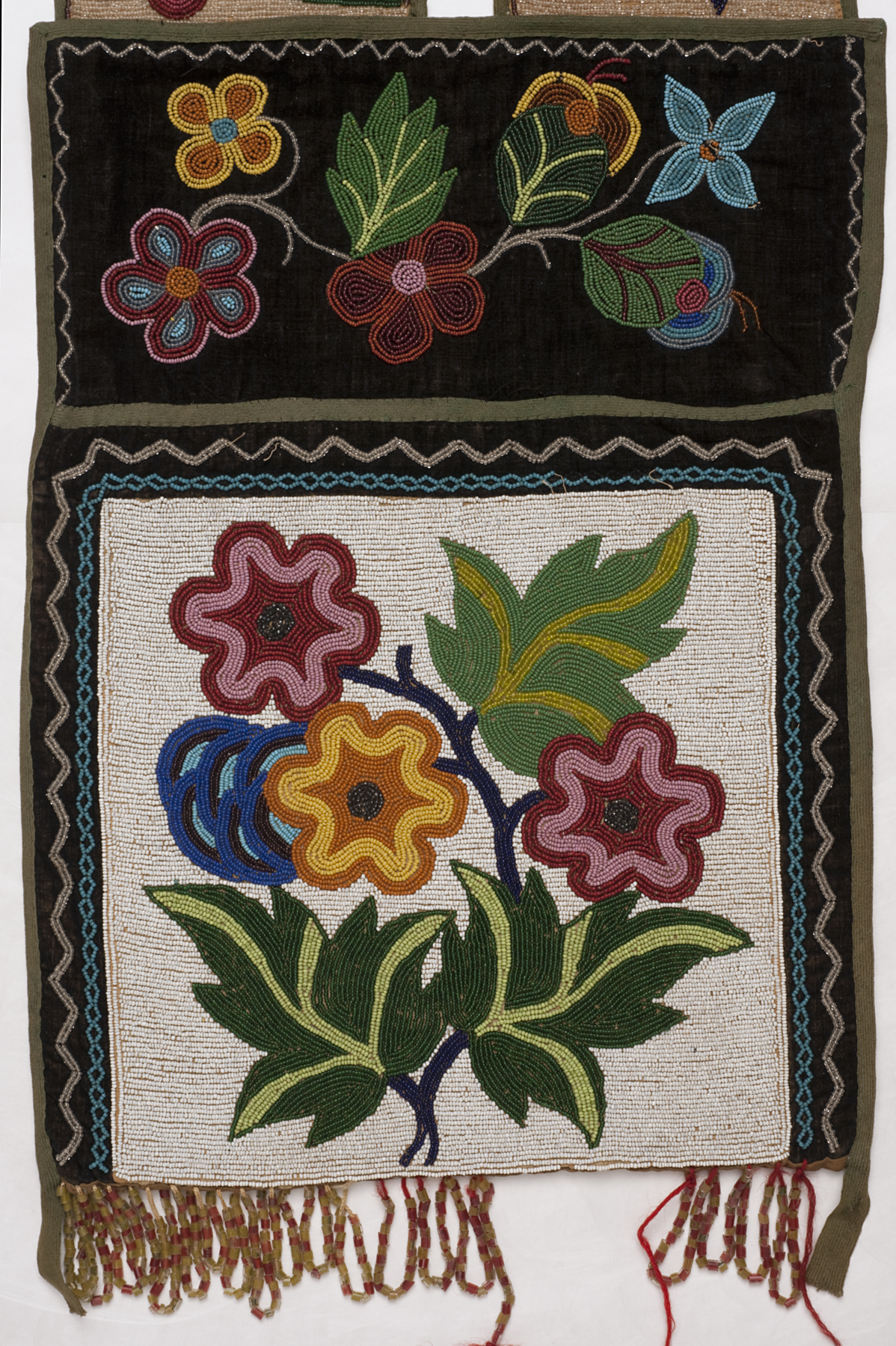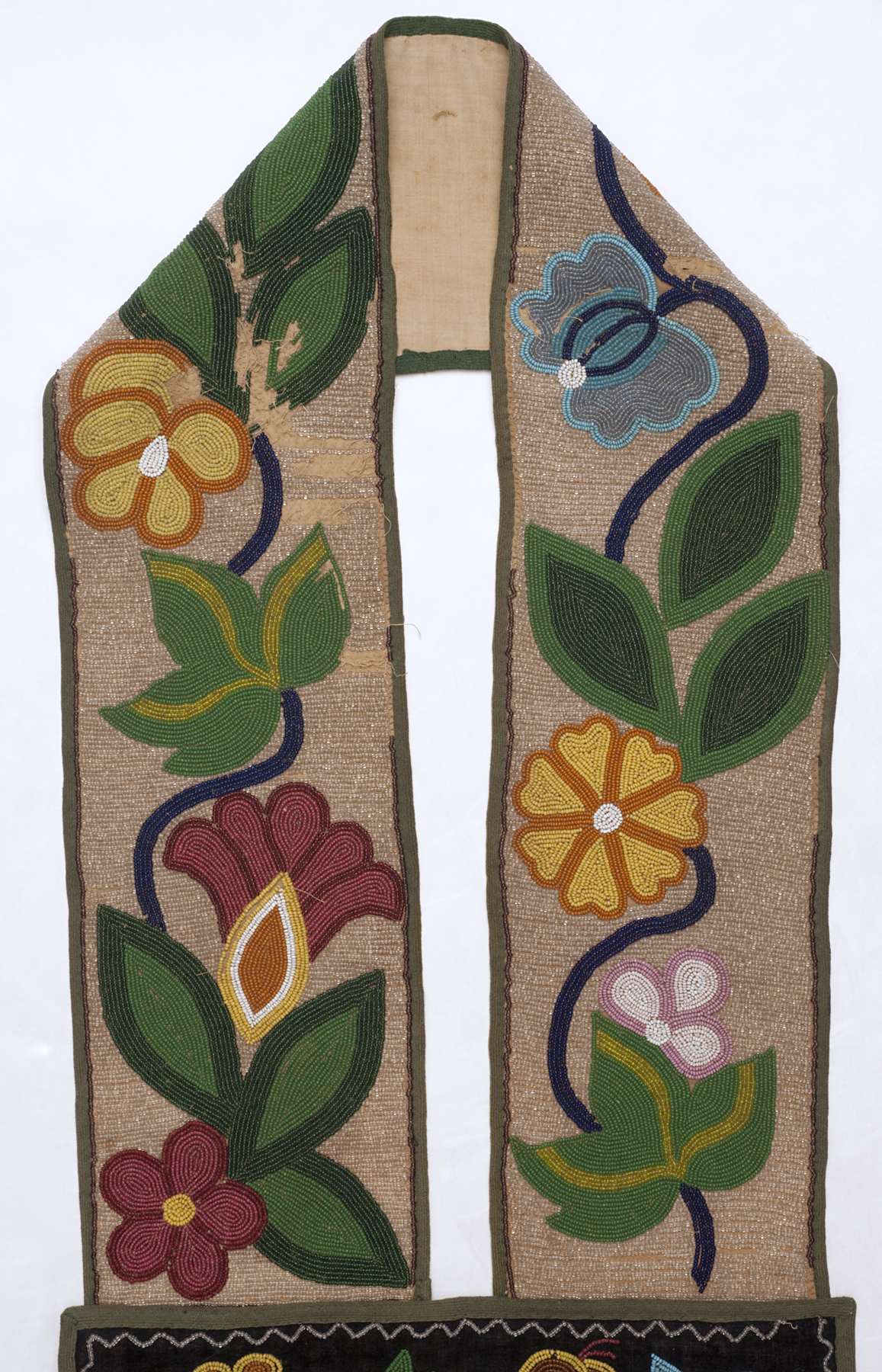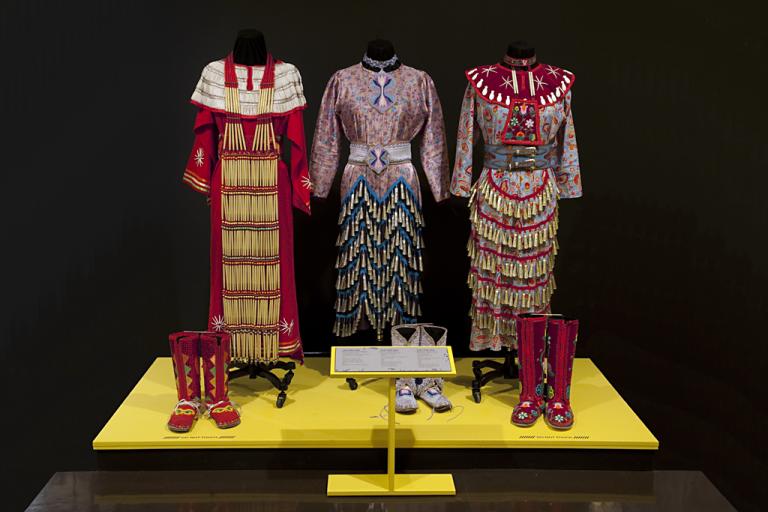bandolier bag, unrecorded Ojibwe artist
Artwork Overview
bandolier bag,
late 1800s–1950
Where object was made: Minnesota, United States or Canada
Material/technique: cotton; beading; wool; velvet
Dimensions:
Object Height/Width (Height x Width): 109 x 38 cm
Object Height/Width (Height x Width): 42 15/16 x 14 15/16 in
Object Height/Width (Height x Width): 109 x 38 cm
Object Height/Width (Height x Width): 42 15/16 x 14 15/16 in
Credit line: Gift from the estate of Gertrude W. Green
Accession number: 2007.1410
Not on display
If you wish to reproduce this image, please submit an image request




